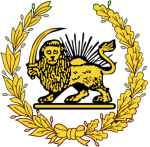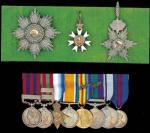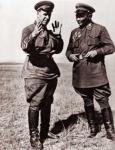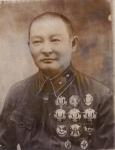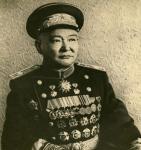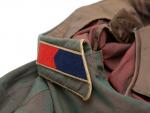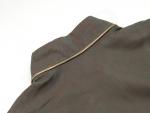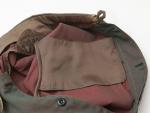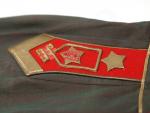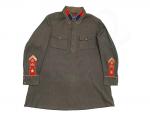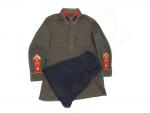-
Posts
22,214 -
Joined
-
Last visited
-
Days Won
67
Content Type
Profiles
Forums
Blogs
Gallery
Events
Store
Everything posted by JapanX
-
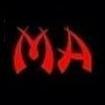
Simple test for “military” division of Lion and Sun order
JapanX replied to JapanX's topic in Middle East & Arab States
Yes, very interesting Michael. Could you please post a scan of this page? Regards, Nick -

Simple test for “military” division of Lion and Sun order
JapanX replied to JapanX's topic in Middle East & Arab States
And then we should remember, that the standing lion with sword was official national coat of arms of Persia. -

Simple test for “military” division of Lion and Sun order
JapanX replied to JapanX's topic in Middle East & Arab States
-

Simple test for “military” division of Lion and Sun order
JapanX replied to JapanX's topic in Middle East & Arab States
Well, I think we will all agree that this man wasn`t a nurse or office clerk. But his lions are definitely lying. So maybe lying lion is indeed indication of award for foreigner and not an indication of military division. -

Simple test for “military” division of Lion and Sun order
JapanX replied to JapanX's topic in Middle East & Arab States
During the Great War he served in France and Gallipoli 1914-15, and as Brigade Commander in Mesopotamia and North Persia 1917-20. He was mentioned in despatches London Gazette 13 July 1916, 27 August 1918, and 5 June 1919; created C.M.G. 1918, and awarded the Order of the Lion and Sun, 1st class, of Persia. Promoted to Brigadier-General in 1917, he commanded the British Forces in North West Persia from 1918 to 1922, and in August 1920 he assumed command of Noperforce (North Persia Force). This Force consisted of the 36th (Indian) Mixed Brigade and three R.A.F. Squadrons. These units were used primarily to overcome banditry, to restore order and to prevent the Bolsheviks from entering Persia, all the while with regard to instructions from the Indian Government that “Our troops must on no account be committed to fresh enterprises which might lead to a difficult situation.” The operations ended in December 1920 and he was created a Companion of the Order of St Michael and St George, as well as receiving the medal with clasp for ‘N.W. Persia’. He retired in 1922 and became General-Secretary of the British Red Cross Society from then until his death on 7 October 1933. -

Simple test for “military” division of Lion and Sun order
JapanX replied to JapanX's topic in Middle East & Arab States
Hugh Frederick Bateman-Champain was born on 6 April 1869, second son of Sir John Bateman-Champain, K.C.M.G., Royal Engineers. He was educated at Cheltenham College and R.M.C. Sandhurst, and joined the West Yorkshire Regiment in 1889. He transferred to the Indian Army and joined the 1st Gurkhas in 1890, taking part in the Waziristan operations of 1894-95, including the action at Wana on 3 November 1894 (Medal with clasp). ‘The British Camp was set up on the Plain of Wana, but the position was not a good one, as it was close to a number of ravines. In the early hours of 3 November, 1894, a party of about 500 fanatical Mahsud Waziris crept silently up two large ravines near the camp and overwhelmed the piquets there. Although the latter got off three shots in warning, the attack was so swift and deadly that the enemy were inside the camp before the troops were even awake. The section of the camp held by the 1/1st Gurkhas took the full force of the attack, and it seems almost certain that many of the Gurkhas were killed in their tents. When the troops turned out, however, they stopped the main rush down the centre of the camp, and eventually drove out the enemy with the bayonet. In all, the escort lost 45 killed and 75 wounded, besides many rifles lost.’ He next served in the operations on the North West Frontier of India 1897-98, Mohmand (Medal with clasp); Tirah Expedition 1897-98, on the Staff, including the capture of the Sampagha and Arhanga Passes, and operations in the Bazar Valley, 25 to 30 December 1897 (Clasp). He was mentioned in despatches for Waziristan 1894-95, and for Tirah 1897-98. -

Simple test for “military” division of Lion and Sun order
JapanX replied to JapanX's topic in Middle East & Arab States
It was awarded to Brigadier-General H. F. Bateman-Champain, 1st and 9th Gurkhas, commanding British Forces in North West Persia 1918-21, and Secretary-General British Red Cross Society 1922-33. What we`ve got here is The Order of St. Michael and St. George, C.M.G., neck badge, India General Service 1854-95, 1 clasp, Waziristan 1894-95 (Lt., 1st/1st Gurkhas) India General Service 1895-1902, 2 clasps, Punjab Frontier 1897-98, Tirah 1897-98 (Lt., 1st/1st Gurkhas) 1914-15 Star (Major, 9/Gurkha R.) British War and Victory Medals, with M.I.D. oak leaf (Brig. Gen.) General Service 1918-62, 1 clasp, N.W. Persia, with M.I.D. oak leaf (Brig. Gen.) Delhi Durbar 1903, silver; Coronation 1911 Persia, Order of the Lion and Sun, 1st class, sash badge and breast star -

Simple test for “military” division of Lion and Sun order
JapanX replied to JapanX's topic in Middle East & Arab States
-

Simple test for “military” division of Lion and Sun order
JapanX replied to JapanX's topic in Middle East & Arab States
Well the most simple test will be to find an authentic group of awards for military man. Even better for foreigner military man Because I really think that "lying lion = foreigner division" and "standing lion = persian division". Well luckily for us I found such group. It was sold in one auction 11 years ago. Here it is. -

Simple test for “military” division of Lion and Sun order
JapanX replied to JapanX's topic in Middle East & Arab States
-
So this tunic definitely came from period before 1938 ... Cheers, Nick
-
-
-
-
I think this tunic came from 1930-1938 period, bacause from the number of holes for orders it certainly not from this period
-
-
-
-
-
-
-
-
-
Well, I think this is might be interesting. Currently its on sale in one russian auction. Looks like a genuine to me.



